QuestionI have a few questions about fish care in general.
1. I have heard conflicting information about betta fish. Some people say that they are happier in small bowls and don't want to be in anything bigger. Others argue that small bowls can't be kept warm enough for bettas to be happy. Am I causing harm to my two betta fish ( in seperate bowls, of course) by just keeping them in small-sized fishbowls? I don't know exactly how much they hold, but I wouldn't think that either was more than half a gallon and that's a very generous estimate.
2. In the above betta bowls, how high should I fill them? I have on in particular - i'd say it's about 5-6 inches tall. I have about 3/4-1" of marbles in the bottom. As it is, I have the tank I'd say probably 2/3 full. I know they have to have air off the surface - so if we measure from the top of the marbles to the rim of the tank should I fill it to 1/2 full, 3/4 full, or stay in between where I am.
3. How often, in the above betta bowl, should I change the water? Obviously I'll change it when it looks dirty or cloudy, but I don't know about oxygen requirements. I've read some places that they can't get enough air if the water isn't changed often. How often should I change my small fishbowl so the fish don't run out of air?
4. I also have a 10 gallon aquarium in which I keep goldfish. My fish have slowly died off, so I waited until the last one was gone and then cleaned it out really well and refilled it. I'm letting the water equalize now - and I need to know in a 10 gallon tank how many goldfish I can keep in it without crowding them. Can I keep 8 fish in there safely? I know it sounds like a lot - but I feel so sorry for the feeder fish at the local pet shop that I'm going to get them instead of the expensive goldfish in the normal tanks. They have a tank of regular (small regular I guess, not pond size or anything) goldfish - they're feeder fish and priced like feeder fish, but they're more like normal goldfish size. The problem is, you have to buy 8 in order to get them. Can I keep that many in the 10 gallon tank?
Sorry so wordy, by the way.
5. In the above 10 gallon aquarium, leftover from the LAST round of fish, I have one kuhlii loach. Now, a now-out-of-business pet store sold me the loach I think at the same time as some goldfish and said it would be okay. However, when I told the new pet store this, they told me that the kuhlii loach was a tropical animal and that it probably should have died from the ammonia from the goldfish.
Can I safely put my loach back into the 10 gallon tank with new goldfish or should I count my blessings and get him a seperate bowl? He seemed healthy before... but I didn't know he wasn't compatible with goldfish.
Thank you for your answers - I know I sound like an idiot but I'm interested in fish and have had them before - just getting questions answered I should have known all along.
Michael Salley
michaelsalley@bellsouth.net
AnswerHi Michael;
You certainly aren't an idiot for asking questions. In my experience, idiots think they already know everything so they don't even ask questions!
Anyway, the betta setup answers are pretty simple actually. Bettas are best off in at least 1/2 gallon of water. Fill them as high as you can without the fish jumping out and change it once a week. Twice a week if the container holds less than a 1/2 gallon. The smaller the container, the less water and the more concentrated their waste is. Don't wait until it "looks" dirty. That is too long. The fish aren't "losing oxygen" when you don't change it very often. The waste buildup is burning their gills, eyes and skin. It would be pretty miserable I'm sure. The water temperature is an issue too. The less water, the more fluctuations of temperature there are. Bettas should be a consistent as possible as far as water quality and temperature.
Bettas that we see now with their beautiful long fins and large sizes are not the humble little fish that once existed in little ponds in Thailand (formerly called Siam). Those little shorter finned fish didn't need much room to exist, but they were in ponds and not "tiny little puddles" that some people would have you believe. What all bettas dislike is a strong water current. They are raised in very slow or still water and are just not physically toned to tolerate it at first. They do get used to it over time, but they need a slow moving area to rest as needed until they do.
Bettas do very well in a regular tank with a filter and other fish. Platies, cory cats, neon tetras, mollies, swordtails, khulii loaches and otocinclus cats are all possibilities. Fish that don't go well with them are other anabantids like paradise and gouramis. Also guppies or other fancy tailed fish have a hard time. The betta sees them as another male betta and will try to fight with them.
The Goldfish;
8 is WAY too many goldfish for that little 10 gallon. The truth is, a 10 gallon is not adequate for goldfish long term at all. Put one or two in there but plan to move them to a larger tank in a few months. Goldfish are very messy, get very large (8 to 10 inches) and can live to be more than 10 years old. Unless you can put them in a 55 gallon tank or larger after they get 3 to 4 inches they should be in an outdoor pond so they can develop to their full potential.
The loach is a tropical fish and needs 75 to 78 degrees all the time, so coldwater goldfish are not good tankmates for him. An established tank should never have any detectable ammonia. If there is, it is too crowded or being overfed.
The loach needs to be in a heated tank if the room temperature ever gets below 72. So, whatever you think as far as the loach, but he really needs a tropical tank. Khuliis also like to be with their own kind. They are schoolers. It would be cool to have two or 3 more in the ten gallon and maybe have a couple of other tropicals like platies. Heaters aren't really too expensive. You need a 50 watt heater for your 10 gallon.
Here also is my article on new tanks to help you through the first few weeks of your 10 gallon tank. Even though the tank itself isn't really new, the system is starting over so it's the same thing;
**********
New Tank Syndrome or Break-in Period
So you have a new tank and you filled it up, put the filter together, mounted the heater into place and turned on the lights. You have all the plants and decorations where you want them....
You are ready for fish.
But, your filter is not ready for a full tank of fish yet.
The filter is running and moving the water and cleaning out crud, right? Of course!
But a very important part of your filter is the part you can't see. An aquarium filter removes the larger visible stuff, but it also must remove the dissolved fish waste that turns into ammonia in the water. To do this, special bacteria must grow in the filter system and on the particles of gravel in the bottom of your tank. This process occurs even on a limited scale in little fish bowls that have no filter in them.
This is "New-Tank Syndrome" or the "Break-in Period". The entire process takes 6 to 8 weeks to complete because these "nitrifying" bacteria grow quite slowly.
Start off with only one or two hardy fish (no more than 2 total inches of fish) for every ten gallons of water and don't add more until the 6 to 8 weeks has gone by. Hard to be patient, but it is worth it to keep your fish alive and healthy. As a matter of fact, the bacteria cannot develop without fish in the tank. You can let that tank sit forever without fish in it, but as soon as the first fish goes in the process begins. Avoid changing the filter pads during break-in. This removes the bacterial colonies that are essential to a balanced aquarium. You can rinse the filter pad out in a container of aquarium water. This will preserve most of the bacteria colonies while still allowing your filter to flow freely. Even using bacteria additives and water conditioners when you first set up the tank will not make a tank begin the cycle by itself. If there are no fish to provide food (fish waste) for the bacteria, the beneficial bacteria cultures will die and you will have to start the colonies all over again once fish are added to the tank. Once the tank has completed the initial cycle, you can change the filter pads every 4 weeks or so. But for now, just rinse them.
Feed your new fish VERY lightly. Any excess food will cause additional waste your system cannot afford to have right now. If you see food floating around or lying on the plants and gravel after five minutes, too much food is going into the tank. Cut back a little each time you feed until it is ALL gone 5 minutes after you feed them. Feed them once a day.
During this "break-in period" your tank will become cloudy and milky looking. You may have to tolerate this for the entire break-in period but it is only temporary. Changing 25% of the water three times a week until the break-in period is over helps a great deal. Changing water reduces the ammonia and nitrites that rise while the bacteria continues to multiply. If ammonia and/or nitrites become too high, your fish will become stressed and possibly die. Use a good water conditioner when you replace the water and make sure it is the right temperature to avoid shocking your fish.
When the break-in is over after 6 to 8 weeks and there are no nitrites or ammonia present in the water you can slowly add more fish. Add one or two every week until you reach the desired population. This allows the bacteria to adjust to the new population every time before adding more. Monitor the nitrites and ammonia to be sure they don't come up. If they do, make a 25% water change and check them again. Don't add the next fish until the levels are down again.
The safe maximum population for any size tank is one inch of adult fish for every gallon of water in the tank. Do some research to be sure of the fish you are interested in. Even though they are small when you buy them, you have to base your population calculations on full-sized adult fish. Many hobbyists have up to two inches per gallon but this can be risky. If a water quality issue arises or a disease occurs it will spread fast and furious in an over-populated tank. In any case, 25% water changes every week to two weeks are absolutely essential for the health of your fish.
Following these guidelines will help you get your new tank on the right track.
**********
Followups welcome, especially if I missed anything!
At Your Service;
Chris Robbins
Come on over and join us on the freshwater fish forum at About.com to get even more information too;
http://freshaquarium.about.com/od/questionsanswers/a/naavigateforum.htm

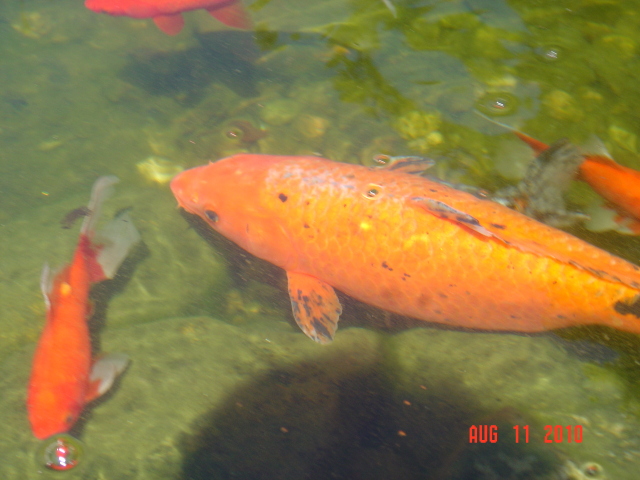 Pond Gold Fish Disease
Question
Gold Fish 040
I have a 4 year old 16 x 21 foot
Pond Gold Fish Disease
Question
Gold Fish 040
I have a 4 year old 16 x 21 foot
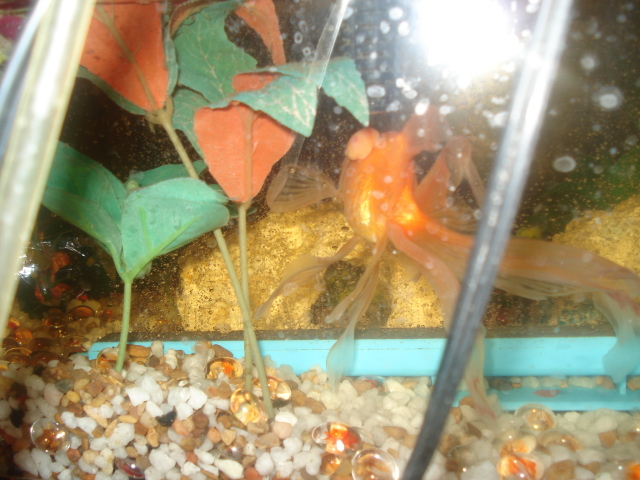 Lump On Fancytail Goldfish
QuestionQUESTION: Please help! I am so concerned for my
Lump On Fancytail Goldfish
QuestionQUESTION: Please help! I am so concerned for my
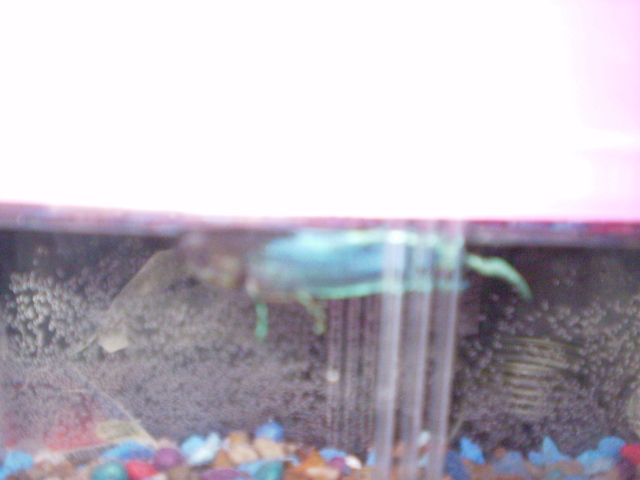 clamped fins,
QuestionQUESTION: I have a Betta that died recently. I
clamped fins,
QuestionQUESTION: I have a Betta that died recently. I
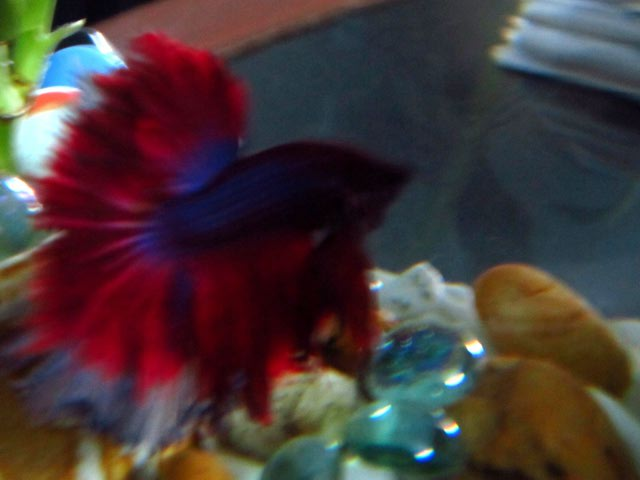 Taking Bettas 36 hrs in train
QuestionQUESTION: Dear Jaymie,
Im from India- in the so
Taking Bettas 36 hrs in train
QuestionQUESTION: Dear Jaymie,
Im from India- in the so
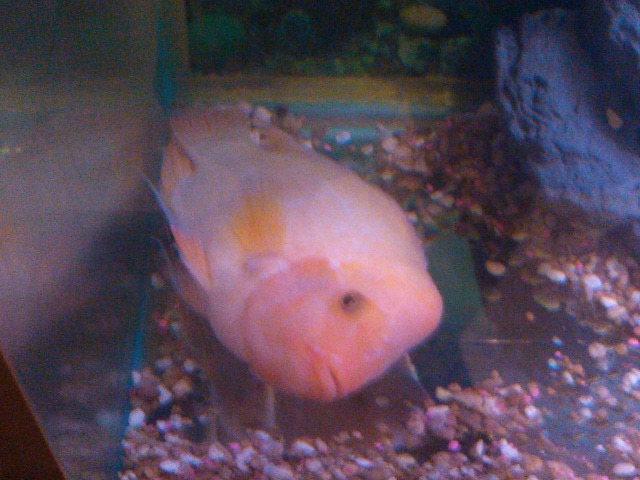 Red Devil Cichlid
Question
Red Devil Weird Swim
OK... Well,
Red Devil Cichlid
Question
Red Devil Weird Swim
OK... Well,